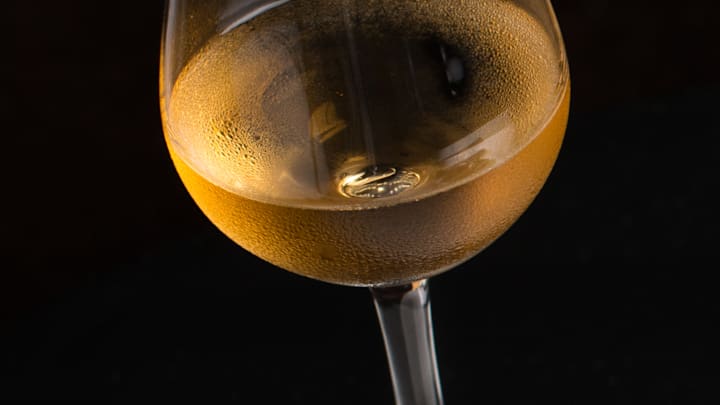Perhaps you’ve enjoyed mead at a Renaissance fair or another medieval-themed event, glugging down the sugary alcohol dispensed by someone in period dress. Maybe you’ve spotted references to mead in your favorite J.R.R Tolkien novel. This ancient alcoholic beverage, made by fermenting honey and water, is practically as old as human civilization.
Mead, a.k.a. honey wine, has inspired the creation of similar drinks—like braggot, made from honey and malt and often characterized as a cross between mead and beer. Here are eight facts about mead through the ages.
1. Mead has been made for millennia.
People have been drinking mead for a very long time. The beverage may have been the result of a fortuitous accident in which rainwater dripped into a pot of honey. Some early records provide clues that a fermented honey drink was enjoyed in India 4000 years ago, and there’s also evidence of a beverage of honey, fruit, and rice originating in China in the 7th millennium BCE.
2. A mead party was immortalized in an Old English epic poem.
Beowulf, a 3000-line heroic poem written sometime before the Norman conquest of England, tells the story of a Scandinavian prince who fights the monster Grendel, who has been attacking the Heorot mead hall belonging to Hrothgar, king of the Danes. Beowulf slays Grendel in a swamp close to Heorot, and Hrothgar hosts a mead-soaked celebration of the prince’s victory. Then Grendel’s mother comes to avenge her son’s death, and Beowulf must play the hero once again.
3. Drinking mead was a central part of Viking culture.
Vikings drank mead at seasonal feasts and other ceremonies that commemorated life’s milestones. It was about more than just enjoying a tipple—it was a ritual. The king would be served first, followed by others according to their social rank. The Norse sometimes have a raucous reputation, but if they did get drunk quickly on mead, that might have been partly due to the serving vessel: a drinking horn which could not easily be put down, therefore encouraging faster consumption.
4. Medieval monks excelled in making mead.

For some monasteries in England and Wales, mead was a product of beekeeping (they also made candles with the beeswax). The dissolution of these monasteries—which owned a quarter of all the cultivated land in England—between 1536 and 1540 was a major aspect of the Reformation under Tudor monarch Henry VIII. But on the tidal island of Lindisfarne in the North Sea, the mead-making tradition that monks began when they founded their monastery on the island in 643 CE continues. Visitors to the island today can sample mead made with local honey and water, drawn from the windswept hills.
5. Royals—and their subjects—drank mead in medieval England.
Queen Elizabeth I had her very own recipe for mead, a concoction that would likely seem too sweet to modern drinkers. But mead wasn’t just for the enjoyment of the royal household, as Geoffrey Chaucer’s famously bawdy 15th-century story collection The Canterbury Tales shows. In “The Miller’s Tale,” mead appears as a means of wooing, and Chaucer describes a young wife with a mouth that is “sweet as bragget or as mead.”
6. Some consider mead to be medicinal.
The ancient Greeks called mead the "nectar of the gods." Since honey has antioxidant and antimicrobial properties, some have deemed mead to be a drink that is not only delicious but also good for you. In 2015, microbiologists Tobias Olofsson and Alejandra Vasquez of Lund University in Sweden developed an experimental mead that harnessed honey’s antibiotic quality to help to fight drug-resistant infections.
7. Mead prompted the concept of “honeymoons.”
The name of this custom has ancient roots, and it wasn’t always about taking a vacation. Since honey was thought to be an aphrodisiac and enhance fertility, a month’s supply of mead (in other words, one moon’s worth of honey) was given to newlyweds. This tradition may have originated in Europe as early as the 5th century CE, but acquired its current meaning as a post-nuptial getaway in the 19th century.
8. Mead is making a comeback.
Far from being an antiquated drink of the past, mead has a bright future thanks to the craft beverage movement. Over the last 20 years, the number of commercial meaderies in the U.S. has jumped from 60 to 450, with many more in the works. And while alcoholic beverages made from honey might sound sickly sweet, many modern meads are drier, and some have wine-like qualities due to barrel aging. With a wide variety of meads now available, it’s a great time to join a drinking tradition that is almost as old as humanity itself.
